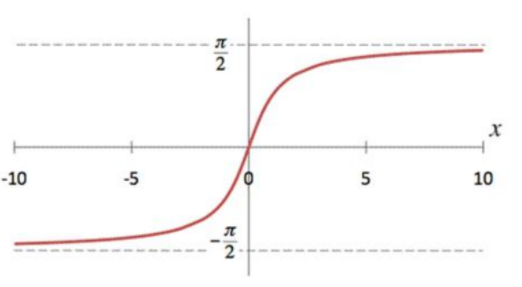Solution:
Option(B) is correct.
To Find: The range of ![]()
Here, the inverse function is given by ![]()
The graph of the function ![]() can be obtained from the graph of
can be obtained from the graph of ![]() by interchanging
by interchanging ![]() and
and ![]() axes.
axes. ![]() , if
, if ![]() is a point on
is a point on ![]() then
then ![]() ,
, ![]() is the point on the function
is the point on the function ![]()
Below is the Graph of the range of ![]()

From the graph, it is clear that the range of ![]() is restricted to any of the intervals like
is restricted to any of the intervals like ![]()
![]() and so on. Hence the range is given by
and so on. Hence the range is given by
![]()
